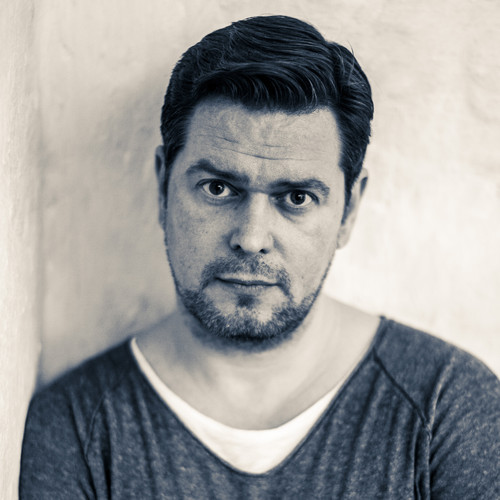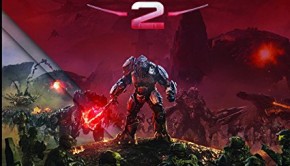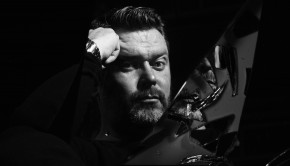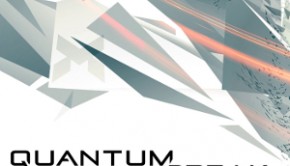Alan Wake Developer Diary
Article Written by Composer Petri Alanko
It’s quite rare to come across a gig with which you’ve got plenty of time to “grow” into and with the characters and locations. Furthermore just as rare is the chance to test things and let everything evolve, teem inside one’s mind, grow stuff, so to speak. I had that chance with Alan Wake, and it turned out to be a rather educating journey into character development and theme composition. I’d say it was my high school, university and thesis. No, two theses, both in marketing and development. I’ve had formal studies, but unfortunately none of it all ever prepared me to this, neither did any of my previous gigs. I found it very valuable and would like to share it, now that I’ve had enough time to dissect some of it.
It all started about five years ago, when Remedy was looking for a guy who would be capable of composing orchestral music and memorable themes — and didn’t fear electronics, either. I’m known to be “a bit” on the geeky side, due to my university studies in the early nineties: I’d studied theoretical physics, musicology and computation science (or just “programming” nowadays). Also I’d studied in a conservatoire in Finland, classical piano among others, so I sort of had all the necessary features. No updates needed.
I’ve been in this business for quite some time, seeing better and worse times, and a mutual friend of mine and Remedy’s actually introduced us to each other. Shortly after his tip, I got a call from a Remedy representative, out of the blue, and was shown the first pictures and a pre-rendered movie — and asked whether I was interested at all. I tried my very best to hide my excitement, but I think the fellows on the other side of the table saw right through me. I could hardly sit still, my skin was going goosebumps all over; I wanted that gig badly, more than anyone else. We agreed to do a test before signing anything else besides the imperative NDA. I was given a rather healthy time span, two weeks, to score a video in which the surroundings of Bright Falls — the locale — were demonstrated, seeing through a flying cam. In the end of the video, the camera lands right next to our protagonist, Mr. Wake.
I kept doing notes whilst watching the video, right there on the spot, in the dark meeting room: just words, graphic shapes, a curve representing the form of a valley. Light, sun. Just words. I think I was quite quiet the rest of that day. I let the movie clip be that day; the next day I got up early and watched the clip again, browsed through my notes, wondering whether I could catch the same feelings, the same themes, the same other reality. I did. I remembered what each graphic symbol represented, understood, each blindly written word. It probably sounds a good leap towards the synaesthesia, but I’ve found it very easy to write onto the picture. Writing onto a movie clip is even easier. Somehow, it just clicks easily. After a short while I had a theme and motifs to at least three others. One of them began ringing in my head when the camera first landed next to Wake.
<>Flying above the mountains and valleys bathing in an autumn sun is one of the easiest tasks, I’d say — and the nice Remedy folks liked the output, obviously. After a short while they gave me that gig. There were not enough chances in Finland to do things in that magnitude and I knew nobody outside Finland in the entertainment business other than pop music, so it was pretty clear I’d beat the shit out of myself if I didn’t give the project my 100%. Heck, the last three most successful movies in Finland had a budget of about 80% of Alan Wake‘s marketing budget, I suppose. That’s those three combined, mind you, which quite easily tells the story of the Finnish entertainment business in so-called traditional area, so no wonder they are increasingly using catalogue music. A sad truth, and unfortunately I’ve lately found the new colleagues abroad complaining the same. It’s always a nice touch to have a track in a movie that’s also cut into a laxative advertisement — and into a bathroom cleaner product ad as well. Go, producers, go… product placement gone bad, so to speak. Karma becomes true: you get what you deserve.
Shortly afterwards, the first leg began. I was given a rough manuscript, even some facial pictures of the people casted for the roles — the casting was still going on, so some of the faces kept on changing. Even the plot was changing constantly, and I had to adapt to changes quickly. Thankfully, what was originally Mr. Wake, was Wake to the end. The looks, the serious face, the rough style, even the stubble. Also, Bright Falls never changed, at least I never saw it changing, whatever’s the truth. It almost felt like every other character kept on evolving, growing, one might say, whilst the location stood still; as if decades went by fast-forwarding, leaving their marks on the characters, while the guys were honing the twists and turns.
The first stages of the score development were pretty rough to do. There was a lot of trial and error involved, but thankfully that phase of chaos lasted only for about one or two months and I concentrated on the stronger themes, knowing that the rest would follow once I’ve set the direction. Also, I never played these first cues to anyone. During that time I managed to compose quite a few strong themes — one of them being what’s now called the “Welcome to Bright Falls” theme. It was very clear from the beginning that it was exactly the right theme for coloring the arrival to Bright Falls just the way we see it in the game: Lots of early autumn air, sunshine, cool air on your face, smell of water and the shores, it was all there.
The other “old” themes were, of course, the eight notes of an Alan Wake theme, the ones that keep on surfacing every now and then, which I composed for an early game show concept trailer. It even got orchestrated, but back then it was far too furious (even baroque to some extent) to be used as Wake’s personal theme. Every time something essential or fundamental happens to Wake, those eight notes are there, even though Wake himself wouldn’t be present. Eventually, the Alan Wake theme evolved into a theme that can be heard in the “previously in Alan Wake” scenes. Actually, there’s virtually nothing in common with that original orchestral, “baroque” theme, but the same eerie sense of mystery is still all over the theme. Remedy wanted the “previously” cue to resemble a similar cue from, say, a TV series. After playing the game, I must say it really works. I do miss those other notes. Whereas the first eight notes represented Wake’s determination, search (of himself and the truth), current state of mind and an ongoing mission, the rest of the theme was bringing up his motives and tools, i.e. ways to overcome the situation in which he was involved with in the game. To grow and to conquer, so to speak.
Also, some of the more sinister ambient tracks were also created during that period. At that time there were no plans about using an orchestra, so I did my best to mock things as well as I could, with different commercial sample libraries and other techniques, in addition to some things done by myself over the years. I was prepared to do quick movements if orchestra was ever needed, so I kept my sequences quite clean, just in case I had to print out a rough score. Keeping clean and naming sequences are two different things, mind you. I never do the latter. Miraculously, I always find what I need. Also, that might be the reason why the only two assistant candidates I’ve ever had didn’t last that long.
Every time I was shown yet another movie or a pre-rendered cinematic, I always had to write something down whilst driving back home. Most of the melodies were actually created on the road. Sometimes the score I was writing into my ragged notebook was so complex that I had to stop the car. Sometimes I was just drawing those cryptic graphic symbols representing an ambient thing I kept hearing in my head whilst watching the pre-rendered clip for the first time. That actually tells quite a lot of Remedy’s standards: most of the ideas were so refined from the beginning, that there was an incredible amount of emotion involved on the screen. On the other hand, it also tells something about my way to work: I like to focus on the first impression, to avoid the so-called “advertisement agency downward spiral” because eventually it all comes back down to its roots — the first impression. No need for versions B to Z, A is all you need. But that requires some confidence, and is actually an antithesis to my other rules: go deeper. Let grow. Don’t believe the appearance. Find out what keeps them going.
I really like to go deeper than that first impression, because otherwise you’d end up with a “normal” score, something shallow. I was moved by the computer graphics, but I knew the score would be too thin if I just “decorate” it with underlining that was happening on the screen. I did two things: I sequenced a rough and dirty demo with the ideas I had gotten from the first glimpse, and then inspected the scene a much longer time with something combining the character motives and tools. I kept referring this as “peeling the character”, or onion method, according to a term used in our meetings. Sometimes peeling was harder as I wasn’t told everything about the plot and the people, and I had to literally run with my eyes closed. There were multiple “trust your feelings, Luke” moments along the way, I must say.
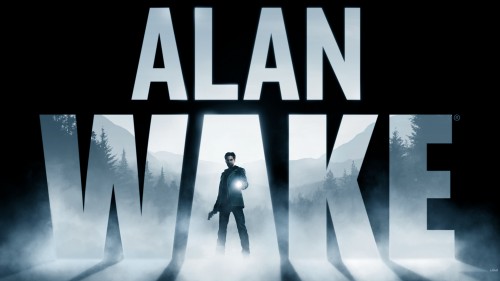
In the end, most of the themes were created this way to their final form. For instance, Mr. Wake was originally pictured as a victim, an epicenter of events and it wasn’t until the car crash in the forest moment when he became “a man on a mission”, but without a motive. The motive itself became clear a bit later, whereas Mr. Wake’s tool changed from emergency, a will to survive, to guilt, very, very strong guilt. And THAT’S when the scoring became the best job in the world. Just lean back and watch the cinematics or the storyboards and let the music flow.
Sometimes what I’d done reflected the final cinematic output because the cinematic team was proceeding at a similar pace, making finished clips along the way, doing tiny changes according to music. The boss of the cineteam really loved to make me cry, sometimes to an extent I started thinking it was a challenge, but the cinematics were just so damn good dramatically from the beginning. There were many “oh god, now I know what to do” moments.
Most the themes involving Alice were done by just looking at her/the actor’s casting picture and reading the few pieces of manuscript I had gotten — how much more Alan Wakeish could scoring be, by the way? Her theme had to be fragile, cozy, willowish (a.k.a. “bending, not breaking”) and a bit hazy, yet warm. Originally I imagined Alice watching Wake drawing further away from a cozy cottage in the countryside, “man’s gotta do what man’s gotta do” tears in her eyes. Quite an innocent scene, but I had nothing else back then. When I finally saw the cinematic involving Alice and Wake in their New York apartment’s coach, it clicked. Clicked, indeed — especially when the “Clicker” theme was combined to Alice’s.
There were multiple moments such as this during the game, I had a lot of fun combining the characters’ themes — sometimes the results were stunning, sometimes I kept them just to myself. Thankfully Remedy never wanted to hear a combination of AW/Barry theme. It was… different. What really brought Barry’s theme, “The Well-Lit Room” alive was one sentence I got into my head from one memoir, “There are always tears in a clown’s eyes.” Even though he’d been a comic relief throughout the game, I had to emphasize his softer side in the scene where Wake takes the Sheriff’s gun and says goodbye to his old pal, Barry. Barry’s reaction — he hugs Wake — was something deeper than just a New Yorker saying goodbye. It was probably the last time the two ever saw one another. Barry has obviously issues, with his shorter form yet somewhat larger waist, and his face isn’t a heartbreaker either, so he’s got a lot to compensate for and a lot to hide behind the jokes and easygoingness. After that realization, it was very, very, easy to go for that string melody line after the piano intro. The intro was originally “The Andersons” but we gave it up. Banjos, dobros, lap steel… well, let’s say it seriously had to go.
“Alice’s Theme” or rather “The Clicker” was actually much longer than what we hear now in the game or on the Limited Collector’s Edition CD, with happier sections which had to be removed due to the plot and what’s happening in the game. I still mourn the absence of her whole theme. The other rather tragic character was Tom Zane, the Diver. He’d gone through similar occurrences compared to Wake’s and was left to the “other side”. At the same time he’d lost his love, so I had the chance of composing to something heart-crushing. I’ve had my fair share of bad luck, so it sort of came naturally — the peak of the theme symbolizing his past, the settling ending representing his current motive. He’s actually the only one really helping Wake, in the end, putting himself in the line of fire, even sacrificing everything, including his own “life”. In a way I was composing a theme for a redeemer, a character paying with his own blood, and I had to use a viola for that. No other instrument can really describe flowing tears (and blood) better.
The orchestra question was brought on the table during October 2009, if I remember correctly. By then I was having a five-lane scoring highway in front of me, quite a monster task, that one — especially when taking into account that over 200 minutes of the music was composed during summer 2009 to January 2010. As I like to work by myself — composing, arranging, recording, mixing — I have become quite an ace to create timetables. There were at least six levels without music at all, and some character and location themes had appeared on the to-do list as well. The last weeks were on a tight schedule: up at seven, work from eight to noon, one-hour break, then continue from 1 PM to 6 PM, dinner, do orchestra stems and ambient tracks from 7 to 9 PM, have a cup of chamomile tea, try to sleep. It’s embarrassing I have to emphasize that I really liked such a military diary, but it was… invigorating? I really miss that time. However, I don’t miss the sitting still as I like to exercise, to run etc.
Thankfully, I got some extra hands from Germany for the orchestration. Dynamedion’s orchestrator David Christiansen did a really nice job. The conductor was well-managed to get the string section to sound like it should be, and phrasing was very important here as some of the orchestral nuances were tied to hand movements on the early cinematics, for instance. All of the orchestra tracks were mixed in five days, just before my deadlines. I had to combine a hefty load of electronics with the delicate orchestral tracks I had received from Germany, and in some of the cases I had to re-work everything underneath to lift up some of the more intimate stuff and to give way to the orchestra. In some of the cues there were 200+ tracks of ambient stuff, percussion, synth layers from analog gear, tiny effected sounds emphasizing what’s happening on the screen and bounced effect returns (which were again re-effected). I even created about two dozen reverb convolution samples for some of the more esoteric cues, raking snow, ripping paper, dropping ball bearings into a water glass… Due to my background, I had also created a special Ambient Machine for Symbolic Sound Pacarana’s processor just to help me create evolving musical drones, controlled by a keyboard and a multiple controllers. I ported that to Native Instruments’ Reaktor 5 later. It’s very prominent in the level 15, by the way.
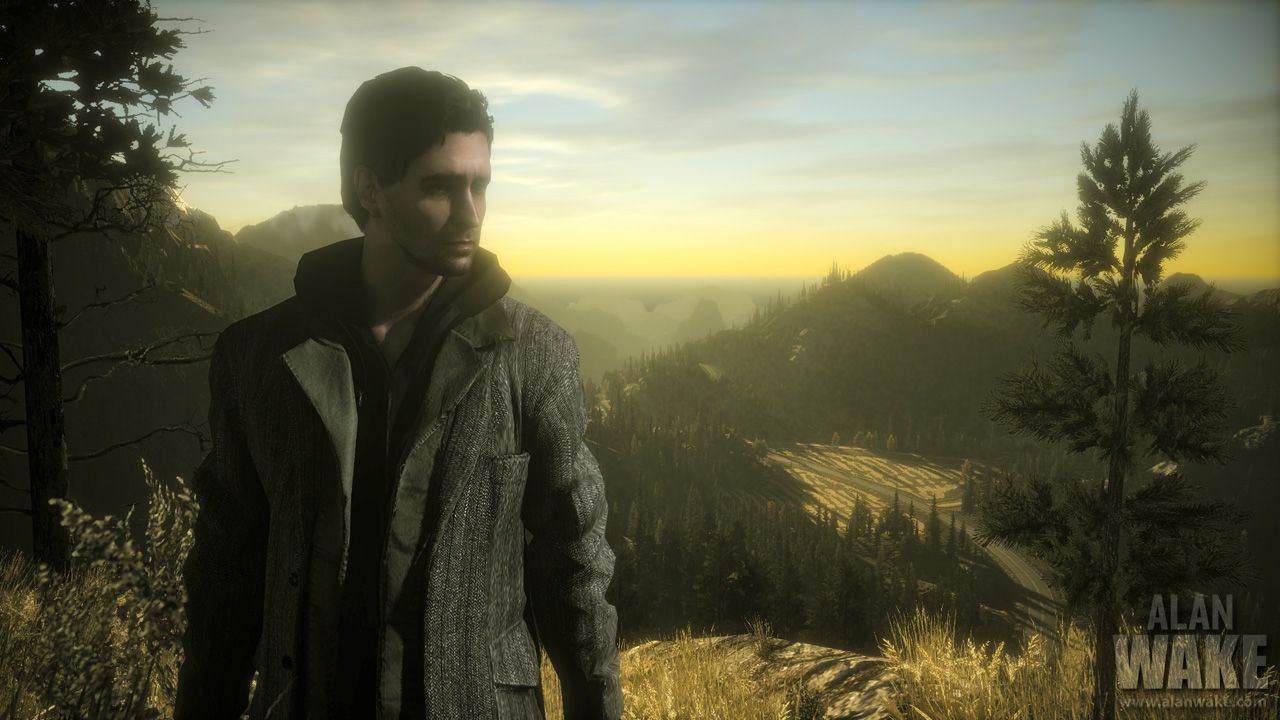
In some of the cues there are only sampled strings, in some of them there are only real ones, but almost certainly there’s always something doubling the original string recordings, be that either Novachord or Mellotron or a single Tuvan monk doubling the contrabass section. In the middle of all that electronic mumbo-jumbo, it was always very important to keep the original immediate emotional strike just above the waterline: whatever happens in the background, no matter how much dark waters are swelling, there has to be a melody that someone could hum. You can’t really hum battle drum rolls, can you? With that melody, I tried to keep the character’s ultimate motif up and close. And it also helps to bring a character or a situation much closer to the gamer, the end user who’d paid his/her money for the game. In a way, putting your time and effort to the melodies is a marketing tool; it’s an effective way to engage the end user to the product. Engage their feelings and their ass will follow, as Gordon Gekko would say. To put the greedy sounding topic aside, I have to emphasize the importance of ethics: you’re only as true as your output is. Once you’re in it only for the money, your output starts degrading.
The first lesson I ever learned during the project was “never underestimate the power of a good melody”, even though using methods of scoring of a romantic movie didn’t seem to fit in the thriller environment. How wrong was I? That quote was a long time on my wall, as a reminder. It was only replaced by “a warrior is no less a warrior if he’s crying” right before the deadline. I wanted to keep myself on the tracks that way. Every morning I listened to some cues I’d mixed the day before to see whether they needed fixes and to see whether they moved me in any way. I remember fixing only a few out of what seems like a hundred. Probably the most important lesson was to learn how important it really is to keep increasing the output quality, to keep on learning, to understand that a composer is never graduated or “ready”. He’s always on the edge, leaning towards the wind.
Posted on May 14, 2010 by Chris Greening. Last modified on April 26, 2014.

